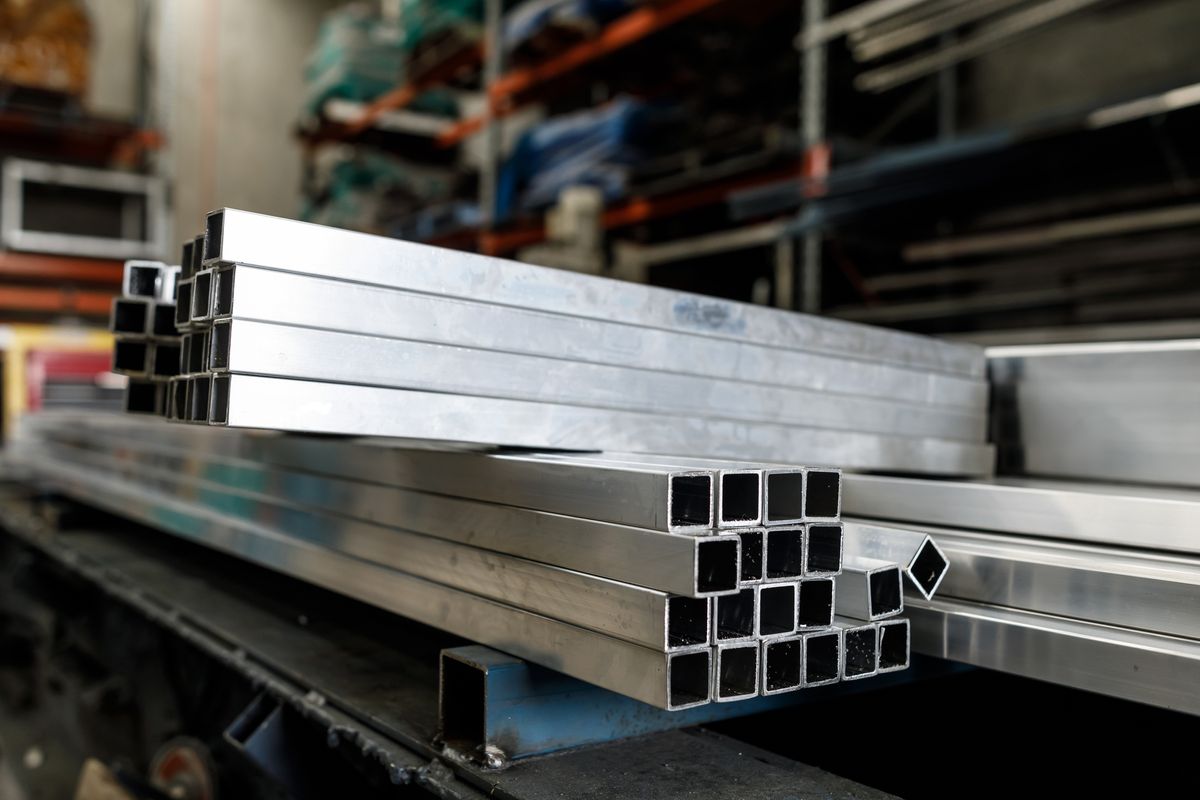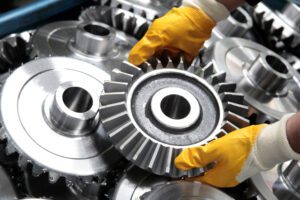What do a refrigerator door and a high-rise have in common? Material. They may both be stainless steel.
Stainless steel fabricators produce components for cookware, home appliances, surgical tools, medical implants, bridges, and automotive bodies. Many of our most memorable landmarks are also made of stainless steel—take the Gateway Arch in St. Louis, The Bean in Chicago’s Millennium Park, or the spires on the United States Air Force Memorial in Arlington.
Chromium is the key to producing stainless steel, a metal known for its unique properties. All stainless steels contain a minimum of 10.5% chromium, which forms a thin passive layer on the steel’s surface when exposed to oxygen. There are several grades of stainless steel with varying amounts of chromium content.
Is fabricating with stainless steel suitable for your project? What sheet metal should you choose for custom components? Keep reading to learn about the amazing benefits of stainless steel.

1. Corrosion-Resistant Steel
Stainless steel’s biggest superpower is its corrosion resistance. Due to its chromium content, stainless steel is naturally resistant to rust and corrosion.
A passive layer of chromium oxide clings to the steel’s surface and protects the iron within from air, water, and other contaminants. The chromium oxide layer is also self-healing. Damaged or scratched stainless steel will repair itself in the presence of oxygen, which is why stainless steel remains shiny after years of use.
Increasing stainless steel’s chromium content increases its corrosion resistance. Low alloyed stainless steels can withstand atmospheric conditions, but high alloyed stainless steels can also resist corrosion from acids and alkaline solutions.
Families of Stainless Steel & Their Chromium Content
- Austenitic stainless steel is the most commonly used type of stainless steel and the toughest—with around 18% chromium.
- Ferritic stainless steels are not as resistant to corrosion as their austenitic counterparts. They are made with 12 to 17% chromium.
- Martensitic stainless steels are made with only 11 to 17% chromium.
- Duplex stainless steels have a high amount of chromium—anywhere from 18 to 28%. Duplex stainless steels feature a microstructure of equal ferrite and austenite, so they display properties of both austenitic and ferritic steels.
2. Easy to Fabricate
Workability is the next characteristic that makes stainless steel a practical choice for fabrication. Manipulating stainless steel can be done fairly easily with the right tools and know-how. Stainless steel is easy to cut, bend, weld, and form as desired.
Nickel deserves the credit for our ability to easily make custom components from stainless steel. Not all stainless steels contain nickel, but 75% of the stainless steel we produce includes this alloy. The nickel content within stainless steel changes its structure to an austenitic structure at all temperatures.
The austenitic structure improves nickel-containing stainless steel’s ductility and formability, and it makes these stainless steels readily weldable. Higher nickel contents are better for deep drawing.
3. Pleasing Aesthetics
Shiny. Bright. Low-maintenance. Stainless steel is an attractive metal that retains its beauty over time. Once installed, stainless steel does not need to be treated, coated, or painted to maintain its appearance.
You can give stainless steel a wide variety of finishes, including matte, brushed, satin polished, bright polished, or mirror finish. Patterned finishes are also possible for building entrance flooring, roofing, and automotive exhaust systems.
4. Long Lifespan
Stainless steel lasts a long time. According to a 2015 study, the average lifespan of stainless steel is 20 years. At the end of its life, stainless steel can be recycled to make new stainless steel or carbon steel.
Yale University research scientist Barbara Reck found that most stainless steel is used to produce metal goods (29.4%) and industrial machinery (29.4%). These end products are followed by building materials (18.4%), car components (12.2%), household appliances (7.8%), and parts for other forms of transportation (2.9%).
The study found that stainless steel used for buildings and infrastructure lasts 50 years on average. Metal goods and household appliances made of stainless steel last about 15 years.
The lifespan and durability of stainless steel outweigh the initial cost of the material. Stainless steel has a higher price per unit compared to mild steel, but less material is usually needed to complete projects because of its properties.
Material selection plays into the final fabrication cost. As global markets continue to recover from COVID-19, stainless steel raw material costs will fluctuate. As of March 2022, these raw materials are projected to increase in price.
5. Temperature Resistant
Stainless steel can take the heat. It has resistance to extreme temperatures. That’s why boilers and water valves are often made from stainless steel. At high temperatures, stainless steel resists scaling and creep. Some grades of stainless steel can be used for temperatures up to 2100℉.
Even in lower temperatures, stainless steel remains tough. Austenitic stainless steels are often used for products exposed to subzero temperatures. Grades 304 and 316 are considered “cryogenic steels” because of their ability to retain tensile strength and ductility in extreme cold.
6. Hygienic
Stainless steel is commonplace in hospitals, kitchens, and food processing plants because it is easy to clean. Due to its natural resistance, stainless steel doesn’t impart contaminants from corrosion onto products, and its shiny surface makes it simple to sanitize again and again.
According to the Food and Drug Administration (FDA), materials that come into contact with food must not contaminate the food or alter its taste or color. The Food Safety Modernization Act was created to prevent food-borne illnesses. Grades 304, 316, and 430 are used by companies that process and package food.
7. Sustainable
Around 50% of new United States stainless steel is made from remelted scrap metal. Stainless steel is completely recyclable. In fact, about 85% of stainless steel is recycled at the end of its life.
Old stainless steel can be used to produce new metals, which is one reason stainless steel is so valuable. Of the stainless steel that’s recycled, 56% is used to make new stainless steel, and 29% is used to produce new carbon steel. In the United States, the average amount of recycled content in stainless steel is 71%.
When you choose stainless steel, you know the material will have a lifespan long past the lifespan of your product.
Custom Stainless Steel Fabrication
Stainless steel is perfect for components that need resistance from rust and corrosion but still need to look the part. Its aesthetics make stainless steel desirable for exterior car parts and home appliances. For industries that rely on sanitary surfaces, stainless steel is hygienic and easy to disinfect as required.
Though stainless steel has a greater initial cost, its unique properties and benefits make it a worthy investment that will stand the test of time.
Request a quote today for your next stainless steel fabrication project. Metaltech Products, Inc. has experience fabricating with stainless steel and can help you from design to delivery.





